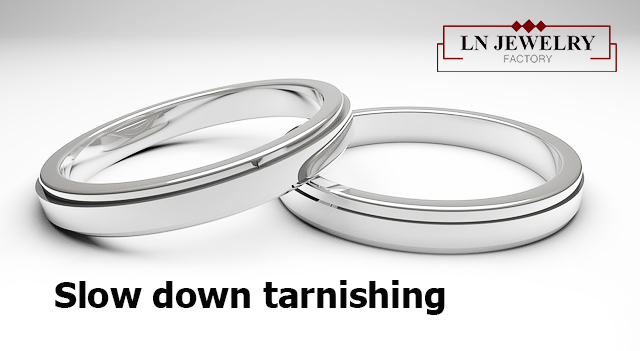Silver jewelry is popular and budget friendly alternative to white gold or platinum when you want a glamorous piece without breaking the bank. But as with any metal, silver jewelry develops a black coating on its surface, sometimes quicker than we expect them to. There are some of common reasons why our beloved silver jewelry tarnishes.
Tarnish is a result of a chemical reaction occurring when silver comes into contact with air and various substances found in everyday life. It does not destroy the underlying metal and can be removed relatively easily.
To slow down tarnishing, clean your cz silver jewelry after wearing it on a daily basis. Naturally oils from your skin accumulate on the surface of silver jewelry and can predispose it to oxidization. Minimize contact of your silver jewelry with substances that can cause tarnishing like chemicals, makeup, lotions, hairspray, perfumes and other personal care products. Don’t forget to remove your silver jewelry when cooking, taking a bath, and swimming. Also, you should store you silver jewelry in a zip lock bag that limits its exposure to air and humidity.
Another way to prevent tarnishing is rhodium plating. Rhodium is a precious metal in the platinum family. Rhodium electroplating is used on silver jewelry to provide a white reflective shining surface that can resist scratches and tarnish. Rhodium is considered a safe and hypoallergenic metal that rarely cause allergic reactions.
Sterling silver stamped “925” made of at least 92.5% pure silver and 7.5% alloys consists of copper. In some cases of sterling silver, a small percentage of other metals may be in the mix so traces of nickel may be present during the production. The term “nickel free” is still allowed to contain a very small amount of nickel around 0.2 micrograms per cm per week for earring post and 0.5 micrograms per cm per week for other products.

